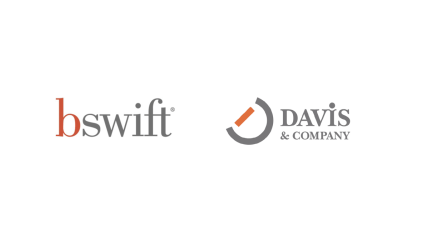
Back in 2000, an article in the Harvard Business Review famously declared “about 70% of all change initiatives fail.” Now the global consulting firm BCG is in on the game, telling us things are worse: “75% of transformation efforts don’t deliver the hoped-for results.” Oh boy.
Take organizational change, for instance. Companies have been managing major change for a very long time—so long, in fact, you’d think they would be good at it.
Yet time after time, leaders (and the communicators who support them) mess it up.
They don’t communicate quickly enough. They’re too conceptual. And they forget employees seek more than information; they need contact with leaders and managers.
All that’s required is a simple principle: Listen to employees. When you take the time to ask employees what works for them, you can design communication that meets their needs and helps change stick.
Since I’ve been practicing internal communication for so many years, I’ve spent a lot of time listening to employees and compiling their suggestions about the best ways to communicate change. Here are their top seven requests:
1. Be specific.
Change communication is often positioned at a high conceptual level, so it’s relevant to everyone. But this approach doesn’t answer employees’ first question, “What does this mean for me?”
What I hear from employees:
“Too often, communication is very general and after I read it, I say, ‘So what really happened?’”
“Communication is fuzzy and unclear. We need a plan of action so that we can see how we fit in.”
2. Tell the straight story.
Employees want to be treated like adults. They want to hear the good, the bad and the ugly.
What I hear from employees:
“When the news is bad, it’s given a positive spin. So, that is not exactly telling the truth.”
“Doesn’t the company trust employees enough to be honest?”
“The more damaging the information is, the more they withhold from us, the more the rumor gets out. There is so much energy wasted on the rumor mill.”
3. Be clear about who’s where and who does what.
When organizations change, roles and processes change too. Defining and sharing updated roles and processes go a long way to help employees see themselves in the change.
What I hear from employees:
“I would like to have a directory so that if I need to reach someone, I can.”
“Org charts would be so helpful. You can’t read through a long email and figure out where a person or team fits in.”
“A problem I’ve run into is that I don’t know who’s covering a certain area. So I have to do a lot of networking to identify the person I need to make contact with.”
4. Hold leaders accountable for communicating
In the thick of an organizational change, leaders forget about a core change communication principle: Being visible builds trust. Help leaders understand their role and be specific about their assignment.
“The CEO has disappeared. You don’t see him in the hallways. We just receive emails from him."
“We need leaders to meet with us regularly to keep us posted about what is going on, what is going to happen.”
“It goes back again to leadership. There’s so much uncertainty, even our leaders don’t know what they’re supposed to be doing. As a result of that, they don’t feel comfortable leading. They’re afraid. When you don’t know what’s going on and you don’t want to misstep, what do you do? You stop talking.”
5. Give managers the support they need to be successful.
It’s tough for managers. They’re often the person employees turn to when they have a question about a change. Invest in building managers’ knowledge so they’re ready to answer questions.
What I hear from employees:
“It seems that senior leaders know things, but they don’t communicate this information to us, the frontline supervisors.”
“Instead of interpreting the message, my manager forwards the entire email, almost with an attitude. It’s like saying ‘Here, look at this. See what they’re doing now?’ She wants us to know what she has to deal with. But the manager’s job is to make the employee’s job easier.”
“I think the problem is that managers don’t know how to manage. People need management training. As part of that training, they need to learn how to communicate.”
“Information given out is not credible. Information is confidential, and only directors and supervisors know the answers, but they won’t tell employees.”
6. Keep communication coming.
One and done doesn’t cut it when it comes to change communication. Ongoing communication—updates, recognition and celebration—help the change stick.
What I hear from employees:
“Communication was very good initially. But since then, we’ve received very little information about the integration process and what it means to us and our jobs."
“There was initial communication, but then the fear factor hit: What does this mean? What is going to happen? What areas will be affected? Communication has been spotty—none, then some, then nothing.”
“Early on, communication was okay in the respect that people knew the role of leaders. But since then, we’re wondering how we’re affected.”
“There was plenty of initial information about how the merger was progressing. But now it’s like pulling teeth to find out how people are impacted.”
7. Open up dialogue.
Discussion is a key way adults learn. By encouraging interaction and dialogue, acceptance grows.
What I hear from employees:
“Effective communication needs to be two-way, and there has to be a certain degree of trust. And employees, in general, do not trust management to respond to their issues; therefore, why bother communicating with them. And I think that is why we do not have effective two-way communication.”
“What one person understands from reading something is not always what everyone understands. So, you need to get one person to ask a question so that they might clarify it for 10 people.”
“Communication should be about conversation. Senior managers really need to know what people feel.”
“One of the most effective ways to share information is by meeting with people. On several occasions, I’ve asked my boss to come talk to my team to share information. I’ve told my boss she needs to say, ‘This is what we know today, even if you don’t have the answers.’ Employees need to hear that leaders don’t have those answers.”
3 examples of addressing employees’ needs
Okay, organizational change isn’t easy and getting it perfect is a challenge. But by listening to employees, you’ll have a great foundation to meet their needs and help change stick.
Here are three examples of ramping up your organization’s listening skills:
- Asking employees what they think. When a supplier to the life sciences industry acquired a competitor, one key initiative to merge the two organizations was to align perks and practices—a tough assignment since they’re often cherished by employees. While documenting these perks and practices, the implementation team uncovered one weekly perk—the acquired company put out baskets of fruit in common areas. When the practice was uncovered, the team in the acquired company declared, “You can’t touch that … employees love it!” With an inventory of perks and practices in hand, we asked employees about them: “Which are important and why?” And when we asked about those fruit baskets, the response was: “What fruit baskets?”
- Helping senior leaders listen. When an educational nonprofit was in the early stages of finding a buyer, we worked with the leadership team to build knowledge of its communication role. Our goal was to help these leaders be visible during this moment of uncertainty. And we gave them an assignment: listen. What are the questions employees ask? What are their concerns? That feedback helped us shape communication as the deal unfolded over several months.
- Involving employees in the change. A support business within a pharmaceutical company underwent an organizational change—reinventing work processes, reporting systems and structure. As work within multiple workstreams got underway and we mapped the communication strategy, we encouraged each workstream to embed “engagement moments” in their process. The concept was to identify a process (or part of a process) that a group of employees could collaborate on to improve it. These engagement moments typically took the shape of a facilitated workshop designed to gather feedback, encourage discussion and generate ideas—the true definition of engagement.
Give listening a try—it will change the way you communicate
Creating best-in-class change communication requires a simple technique: listening to employees. Give it a try—ask employees about your recently launched change: What details are missing? How would they like to hear about updates? Where is the change getting stuck?




